Biscuit manufacturers have been hit hard by rises in the price
of raw materials, but despite this things are looking promising for the market, reports Kate Miller
Despite the best efforts of manufacturers, few people give much thought to the ingredients in our biscuits. However, the recent price hikes in raw materials mean it may be something more shoppers will do as manufacturers are forced to pass the extra costs down the line.
Burton's category manager Sue Garfitt says the rises were inevitable as manufacturers have been unable to absorb all the extra costs. "As with lots of other food and drink categories, the biscuits sector is going through a tough time at the moment. There's been an extraordinary rise in the price of raw materials. It's really unprecedented."
Bahlsen marketing manager Jon Dance agrees: "The rises have had a huge impact across all markets, and that includes biscuits. For example, the cost of chocolate has gone up by 25% in the past three months. It isn't possible for manufacturers to absorb such hikes, so inevitably consumers will feel the pinch."
Small comfort comes from the fact that these increases are being felt across the trade. Says Garfitt: "I don't think multiple grocery is in any different position to other retailers. Prices are up and we're not at the end of the storm yet."
United Biscuits UK commercial manager Nick Stuart says that the company is trying to absorb much of the increased commodity and energy costs through a focus on cost efficiency across its business: "This has resulted in price increases on UB products being minimised. UB will continue to implement tight cost controls, but regrets that further price increases may result if commodity prices continue to rise at their current rates."
At Kraft, the policy of pricemarked packs is helping convenience stores compete
in uncertain times. Says UK biscuits director Jocelyn McNulty: "We make sure convenience doesn't go out of line with multiples through our pricemarking strategy."
A relative newcomer to the biscuits market after acquiring the Ritz and Oreo brands in 2006, Kraft is this year throwing its weight behind Oreo biscuits with a £4.5m media campaign including outdoor and print advertising in April, plus the current TV advertising campaign which explains the 'Oreo ritual' to consumers.
"Twist, lick and dunk," says McNulty. "It's what makes Oreo not just a biscuit and kids love doing it."
Last year Kraft launched Oreo mini packs and has this year added a family pack (rrp 85p).
McNulty says that convenience retailers are extremely important to the brand: "Getting Oreos into convenience has been critical for the success of the brand - one of the key learnings has been don't just put Oreos in the multiples."
Visitors to the USA will know that there is far more to the brand than the few skus available over here. However, McNulty says that the company will bring in new variants only when it feels it's ready: "It's a real challenge to make sure we don't go too fast on the brand. Building a brand takes time and we will be listening hard to consumers."
Despite price hikes and an unsteady economy, manufacturers report 2007 as being a satisfactory year. UBUK's Stuart says: "The market is up 4% - some of it is to do with new products helping to stimulate the market and some because of advertising behind major brands. The healthier arena had a good year and is not growing to the detriment of other sectors. Everyday held its own, which is good news for c-store retailers."
He says the company's range of pricemarked packs proved extremely profitable: "We extended the range last year because the feedback from retailers was that having pricemarked packs is a sign of value for money. We've seen a big increase in volume through that, but it really only works on big sellers."
Bahlsen's Dance adds: "The past year has been a relatively good one from an overall market perspective, in as much as after years of steady volume decline the market actually experienced slight growth. For Bahlsen, last year was the third record year in a row, with sales increasing by 33%."
Dance believes that the current threat of a recession could actually help certain sectors of the market. "When consumers are having to watch what they spend, the total spend on smaller indulgent treats such as biscuits tends to increase, which is what we're seeing here."
Launches for 2008 include a 50g variant of the Crispini product, previously available only in a 125g bag in convenience. Earlier this year Bahlsen introduced three new products: a banana addition to its Choco Leibniz range; Choco Sticks, a crunchy biscuit stick coated in chocolate; and Peanut Delight, Bahlsen's first peanut snack. The company also launched its dunking Dip It! biscuit last year. The biscuit is available in two variants - Milk & Crispies and Chocolate & Choc Chip - and has an elongated shape for dipping without hitting the side of the mug. A step-by-step guide to dunking is available on the website www.bahlsen.com.In fact, dunking seems to be a bit of a theme at the moment. Fox's has recently launched Dunked - a finger-shaped, chocolate-covered biscuits available in shortcake and oat varieties.
New horizons
Entering new sectors also worked for Burton's last year. Garfitt says: "In terms of Burton's we're very pleased - success has come
through quite a lot of growth around the core brands and entering new sectors, with Bertolli and Green & Black's."
This year Burton's is hoping to increase its penetration of the convenience market. "We have a reasonable footprint in convenience, but not as extensive as we'd like it to be," Garfitt says. "We're actively looking at what can be done to bring more convenient products to market."
She says that she can see a time when Burton's could go to market with a new product in the convenience channel before the multiples, as the business expands and makes more acquisitions. "We want to inject some energy into the impulse arena and there's going to be concerted effort from Burton's this year around this channel."
Stuart says that convenience has always been vital for UBUK: "For us, all channels are important for our portfolio. For instance, for mini cookies it was very much impulse driven and we had the bags going into impulse first before the multiples. It's about getting the right packs for the market."
The company has recently announced the return of Dark Chocolate Hob Nobs, which last appeared as a limited edition. The biscuits will have a rrp of £1.69.
Its McVitie's Penguin brand has recently gone into partnership with the World Wildlife Fund (WWF), aiming to help raise awareness of conservation issues. The campaign hopes to inform families with young children about the work the WWF undertakes and the importance of conservation. Consumers will get the opportunity to adopt a penguin and McVitie's will donate to the fund 1p from every pack sold. The company wants to raise £250,000 for the WWF over a 12-week period.
This year, says Stuart, retailers can expect new products from McVitie's and more advertising on Go Ahead. The company is also working with wholesalers and cash and carries on category guidelines.
Trends to watch
All manufacturers agree that the main trends remain health and pleasure. Says Dance: "The increased awareness of and debate about the growing rate of obesity levels in both children's and adults' health mean that chocolate biscuit bars still continue to struggle as a category overall, while the opposite impact can be seen in the healthier category, which is now the largest in value terms. The special treat category has also experienced growth, with total value sales increasing by more than 7% since January 2007."
But in a market with so many skus, it can be difficult for retailers to decide exactly what to stock and how much time to give npd to establish itself. Stuart, who recommends that a two-metre run for biscuits should be the minimum for most convenience outlets, says: "We're essentially a snacking market and without npd we couldn't stimulate the market. We launched Yumbles organic this year and there will be people who immediately switch across because it's organic and others who will try it because it's McVitie's."
Dance says: "Retailers need to tailor their ranges to suit their specific audience, so when putting any new products on trial they should have an idea of how they will fare. The best advice I can give is to make sure any product gets a good run, and when provided use promotional material to aid sales."
He says that the convenience market has always treated his company's npd well: "It's fair to say that the convenience sector supports us better than the major multiples in terms of being prepared to try our new products."
Garfitt says that how long retailers give a new product depends on what it is: 'Take something new to the everyday category - think about the frequency shoppers will buy it: once a week or once every two weeks, so you would expect it to move very quickly. If it's a special treat, the frequency would be a lot lower and you might only buy into that segment as a shopper three to four times a year - the trial mechanic would be that much longer. Most retailers would give a three- to four-month window on something like a biscuit barrel line."
Stuart agrees: "You'll quickly get a feeling for what's going to work - if it's not selling put it on a manager's special and get rid of it because dead shelf space helps nobody."
And while the number of skus and sub-categories can be overwhelming, manufacturers agree that retailers should make sure they keep a variety of products: "People have to have choice - certainly if retailers don't stock healthier brands they will be missing out on a big opportunity," says Stuart.
He also believes that retailers must take advantage of any advertising thrown behind brands. "The advertised brands need to be on shelf because the effect seen from advertising, whether it's TV or print, is very clear. There's a surprising number of retailers who don't carry those brands."
of raw materials, but despite this things are looking promising for the market, reports Kate Miller
Despite the best efforts of manufacturers, few people give much thought to the ingredients in our biscuits. However, the recent price hikes in raw materials mean it may be something more shoppers will do as manufacturers are forced to pass the extra costs down the line.
Burton's category manager Sue Garfitt says the rises were inevitable as manufacturers have been unable to absorb all the extra costs. "As with lots of other food and drink categories, the biscuits sector is going through a tough time at the moment. There's been an extraordinary rise in the price of raw materials. It's really unprecedented."
Bahlsen marketing manager Jon Dance agrees: "The rises have had a huge impact across all markets, and that includes biscuits. For example, the cost of chocolate has gone up by 25% in the past three months. It isn't possible for manufacturers to absorb such hikes, so inevitably consumers will feel the pinch."
Small comfort comes from the fact that these increases are being felt across the trade. Says Garfitt: "I don't think multiple grocery is in any different position to other retailers. Prices are up and we're not at the end of the storm yet."
United Biscuits UK commercial manager Nick Stuart says that the company is trying to absorb much of the increased commodity and energy costs through a focus on cost efficiency across its business: "This has resulted in price increases on UB products being minimised. UB will continue to implement tight cost controls, but regrets that further price increases may result if commodity prices continue to rise at their current rates."
At Kraft, the policy of pricemarked packs is helping convenience stores compete
in uncertain times. Says UK biscuits director Jocelyn McNulty: "We make sure convenience doesn't go out of line with multiples through our pricemarking strategy."
A relative newcomer to the biscuits market after acquiring the Ritz and Oreo brands in 2006, Kraft is this year throwing its weight behind Oreo biscuits with a £4.5m media campaign including outdoor and print advertising in April, plus the current TV advertising campaign which explains the 'Oreo ritual' to consumers.
"Twist, lick and dunk," says McNulty. "It's what makes Oreo not just a biscuit and kids love doing it."
Last year Kraft launched Oreo mini packs and has this year added a family pack (rrp 85p).
McNulty says that convenience retailers are extremely important to the brand: "Getting Oreos into convenience has been critical for the success of the brand - one of the key learnings has been don't just put Oreos in the multiples."
Visitors to the USA will know that there is far more to the brand than the few skus available over here. However, McNulty says that the company will bring in new variants only when it feels it's ready: "It's a real challenge to make sure we don't go too fast on the brand. Building a brand takes time and we will be listening hard to consumers."
Despite price hikes and an unsteady economy, manufacturers report 2007 as being a satisfactory year. UBUK's Stuart says: "The market is up 4% - some of it is to do with new products helping to stimulate the market and some because of advertising behind major brands. The healthier arena had a good year and is not growing to the detriment of other sectors. Everyday held its own, which is good news for c-store retailers."
He says the company's range of pricemarked packs proved extremely profitable: "We extended the range last year because the feedback from retailers was that having pricemarked packs is a sign of value for money. We've seen a big increase in volume through that, but it really only works on big sellers."
Bahlsen's Dance adds: "The past year has been a relatively good one from an overall market perspective, in as much as after years of steady volume decline the market actually experienced slight growth. For Bahlsen, last year was the third record year in a row, with sales increasing by 33%."
Dance believes that the current threat of a recession could actually help certain sectors of the market. "When consumers are having to watch what they spend, the total spend on smaller indulgent treats such as biscuits tends to increase, which is what we're seeing here."
Launches for 2008 include a 50g variant of the Crispini product, previously available only in a 125g bag in convenience. Earlier this year Bahlsen introduced three new products: a banana addition to its Choco Leibniz range; Choco Sticks, a crunchy biscuit stick coated in chocolate; and Peanut Delight, Bahlsen's first peanut snack. The company also launched its dunking Dip It! biscuit last year. The biscuit is available in two variants - Milk & Crispies and Chocolate & Choc Chip - and has an elongated shape for dipping without hitting the side of the mug. A step-by-step guide to dunking is available on the website www.bahlsen.com.In fact, dunking seems to be a bit of a theme at the moment. Fox's has recently launched Dunked - a finger-shaped, chocolate-covered biscuits available in shortcake and oat varieties.
New horizons
Entering new sectors also worked for Burton's last year. Garfitt says: "In terms of Burton's we're very pleased - success has come
through quite a lot of growth around the core brands and entering new sectors, with Bertolli and Green & Black's."
This year Burton's is hoping to increase its penetration of the convenience market. "We have a reasonable footprint in convenience, but not as extensive as we'd like it to be," Garfitt says. "We're actively looking at what can be done to bring more convenient products to market."
She says that she can see a time when Burton's could go to market with a new product in the convenience channel before the multiples, as the business expands and makes more acquisitions. "We want to inject some energy into the impulse arena and there's going to be concerted effort from Burton's this year around this channel."
Stuart says that convenience has always been vital for UBUK: "For us, all channels are important for our portfolio. For instance, for mini cookies it was very much impulse driven and we had the bags going into impulse first before the multiples. It's about getting the right packs for the market."
The company has recently announced the return of Dark Chocolate Hob Nobs, which last appeared as a limited edition. The biscuits will have a rrp of £1.69.
Its McVitie's Penguin brand has recently gone into partnership with the World Wildlife Fund (WWF), aiming to help raise awareness of conservation issues. The campaign hopes to inform families with young children about the work the WWF undertakes and the importance of conservation. Consumers will get the opportunity to adopt a penguin and McVitie's will donate to the fund 1p from every pack sold. The company wants to raise £250,000 for the WWF over a 12-week period.
This year, says Stuart, retailers can expect new products from McVitie's and more advertising on Go Ahead. The company is also working with wholesalers and cash and carries on category guidelines.
Trends to watch
All manufacturers agree that the main trends remain health and pleasure. Says Dance: "The increased awareness of and debate about the growing rate of obesity levels in both children's and adults' health mean that chocolate biscuit bars still continue to struggle as a category overall, while the opposite impact can be seen in the healthier category, which is now the largest in value terms. The special treat category has also experienced growth, with total value sales increasing by more than 7% since January 2007."
But in a market with so many skus, it can be difficult for retailers to decide exactly what to stock and how much time to give npd to establish itself. Stuart, who recommends that a two-metre run for biscuits should be the minimum for most convenience outlets, says: "We're essentially a snacking market and without npd we couldn't stimulate the market. We launched Yumbles organic this year and there will be people who immediately switch across because it's organic and others who will try it because it's McVitie's."
Dance says: "Retailers need to tailor their ranges to suit their specific audience, so when putting any new products on trial they should have an idea of how they will fare. The best advice I can give is to make sure any product gets a good run, and when provided use promotional material to aid sales."
He says that the convenience market has always treated his company's npd well: "It's fair to say that the convenience sector supports us better than the major multiples in terms of being prepared to try our new products."
Garfitt says that how long retailers give a new product depends on what it is: 'Take something new to the everyday category - think about the frequency shoppers will buy it: once a week or once every two weeks, so you would expect it to move very quickly. If it's a special treat, the frequency would be a lot lower and you might only buy into that segment as a shopper three to four times a year - the trial mechanic would be that much longer. Most retailers would give a three- to four-month window on something like a biscuit barrel line."
Stuart agrees: "You'll quickly get a feeling for what's going to work - if it's not selling put it on a manager's special and get rid of it because dead shelf space helps nobody."
And while the number of skus and sub-categories can be overwhelming, manufacturers agree that retailers should make sure they keep a variety of products: "People have to have choice - certainly if retailers don't stock healthier brands they will be missing out on a big opportunity," says Stuart.
He also believes that retailers must take advantage of any advertising thrown behind brands. "The advertised brands need to be on shelf because the effect seen from advertising, whether it's TV or print, is very clear. There's a surprising number of retailers who don't carry those brands."



















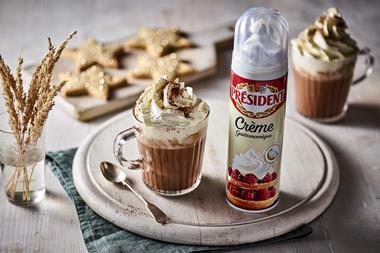
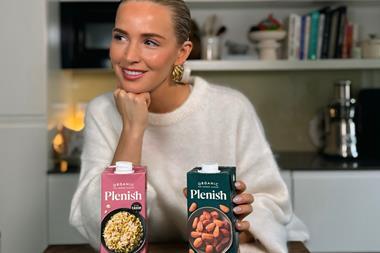
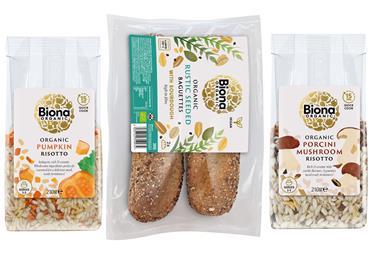
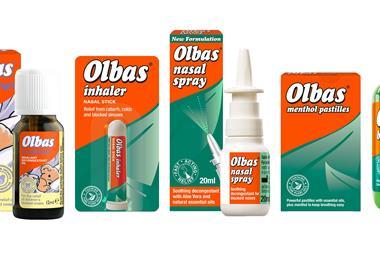
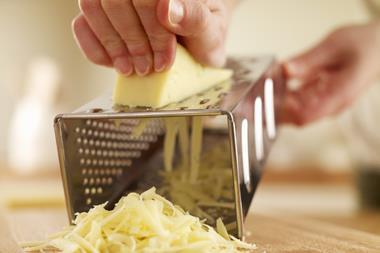


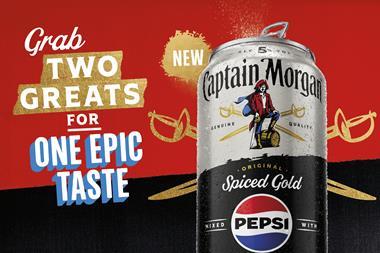

No comments yet